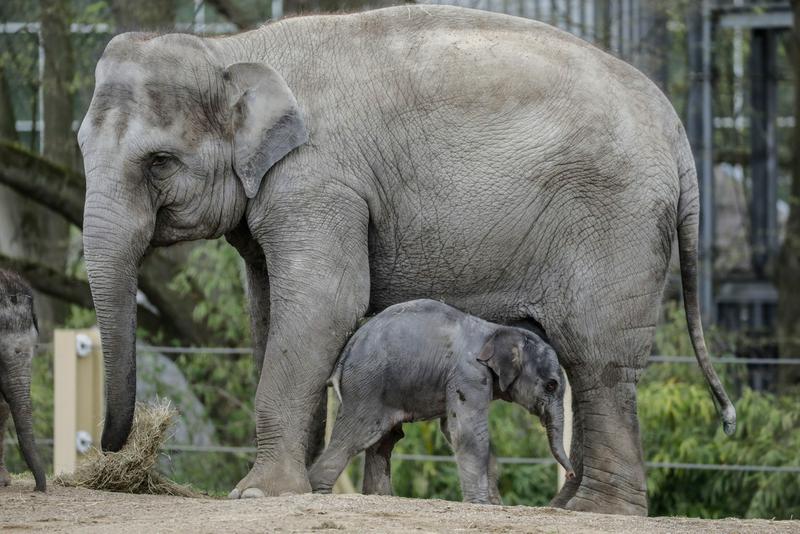The U.S.'s Most Destructive Zoos
By | January 3, 2021

Every year, millions of people around the world visit zoos and animal-themed amusement parks, yet the practice of collecting and displaying wild animals has long been a controversial topic. While some people see the value in studying and conserving animals, especially those that are endangered or native to currently uninhabitable areas, others view the practice of animal captivity as inherently cruel and inhumane, and some of your faves are on the list of worst offenders.
The First Zoos
For thousands of years, humans have collected animals to show off to their family and friends, with some of the earliest examples of animal menageries found as far back as 2500 B.C.E. in Egypt. However, the first true zoological park as we know it today opened in Paris in 1793, as members of the general public were allowed to view the adorable wonders of the Ménagerie du Jardin des Plantes. The London Zoo of 1826 took things a step farther toward modernity, as they not only exhibited their animals but also dedicated time and funding into studying them.
Unfortunately, the biologists weren't quick enough to keep up with the animals' needs, and most of these early zoo animals suffered untimely deaths. Over time, however, zoologists and biologists alike discovered and built upon a global knowledge base, and in many cases, the life expectancy of animals in public zoos is equal to (if not longer than) their counterparts in the wild. Zoos around the world have made important strides in habitat conservation and rehabilitation, and some even release some of their healthy animals back into the wild when possible.

Disney's Animal Kingdom
However, not all who keep and exhibit animals are doing so with knowledge and preservation in mind. Back in the '90s, Disney's Animal Kingdom fell under some scrutiny when it was revealed that 31 animals in their care died in the months before the park's opening, although the U.S. Department of Agriculture did not find their mishandling to be criminal by nature.
Among the fallen were two otters who died when Disney planted poisonous loquat trees in their environment under the incorrect notion that the otters wouldn't try to eat them and cheetah cubs who were poisoned rather more mysteriously. Even a federal investigation could not determine how they got hold of the toxic chemicals they ingested. In 2014, the park made animal rights group In Defense of Animals's "10 Worst Zoos for Elephants" list due to the death of two elephants, one of which was pregnant.

SeaWorld
Although many protested the original opening of Disney's Animal Kingdom back in 1998, that backlash is nothing when compared to the financial beating SeaWorld took after the 2013 release of Blackfish, a documentary criticizing the treatment of orca whales in the parks' captivity. The film chronicled the violent nature of one whale, Tilikum, who was involved in the deaths of three humans, including his young trainer, Dawn Brancheau.
Despite their being called "killer whales," orcas are usually not aggressive and have never been known to kill a human in the wild, leading the filmmakers and other activists to believe that Tilikum's treatment in several entertainment parks, some of which held him in small pools for years, caused him to become unnaturally violent. Blackfish also points out the health risks suffered by captive orcas, like collapsed dorsal fins, which are seen in all captive male orcas but extremely rarely in wild and healthy ones.
In the years following the release of the film, SeaWorld suffered slumping sales and a 33% drop in stock prices. While the amusement park ended its breeding program in response to major criticism, it continues to host live orca shows.

Ringling Bros. And Barnum & Bailey
The growing sentiment against animal shows has had an even bigger impact on businesses like Ringling Bros. and Barnum & Bailey, who has been in the circus game for over a century, touting their event as "The Greatest Show on Earth" since the late 1800s. Throughout the decades, animal shows were a major attraction of the circus, alongside human acrobatics and magic tricks. The methodology the trainers used to force their animals to perform stunts, however, was viewed as cruel by many animal lovers. Elephants in particular suffered through painful corrections, often being hit with bullhooks or even receiving powerful electric shocks that have occasionally resulted in the animal's death.
As the field of biology shed greater light on the high intelligence and emotional complexities of elephants, the general public grew more unhappy with their treatment in circuses. According to scientists, it turns out elephants can use tools, empathize with other elephants, and even recognize themselves in mirrors, something few other creatures on Earth can do. After being hit with major fines by the U.S. Department of Agriculture for animal rights violations, Ringling Bros. and Barnum & Bailey stopped using elephants in 2016 and eventually closed its doors entirely the following year.

The Greater Wynnewood Exotic Animal Park
In 2020, the world got a closer look at the nature of roadside zoos, specifically one in Oklahoma called The Greater Wynnewood Exotic Animal Park, run by the now-infamous Joe Exotic. The poor conditions of its tigers and general mayhem of the zoo was featured on the major hit Netflix series Tiger King, inspiring many Americans to rethink the value of those kinds of entertainment-driven animal attractions. In the months following the show's release, the current owner of the zoo lost his license due to the malnutrition and poor medical treatment of several animals. The tigers have since been ordered to be sent to more capable homes.

